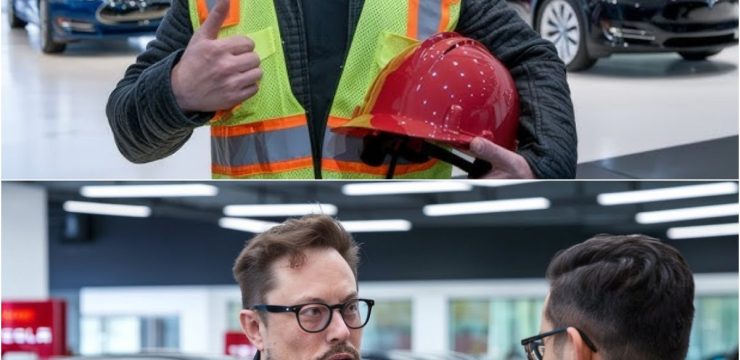Roundabouts in America: Why These Circular Intersections Are Changing How We Drive
If you’ve done any driving lately in American cities or suburbs, you’ve probably come across one of those circular intersections that seem to be popping up more and more. Yep, we’re talking about roundabouts. While some folks are totally on board with them, praising their ability to keep traffic moving, others find them a little puzzling—maybe even nerve-wracking.

But what exactly is a roundabout? Why are more communities choosing them over the usual four-way stop or traffic signal? Turns out, roundabouts aren’t just about smoother traffic. They’re also safer, more efficient, and better for the environment. Let’s dive into what makes roundabouts such a game-changer in road design across the U.S.

What Is a Roundabout, Anyway?
A roundabout is a type of intersection where traffic flows in a counterclockwise circle around a central island. Instead of stopping at a red light or stop sign, drivers simply yield to vehicles already in the circle. This setup means:
-
Drivers entering must yield to traffic already in the roundabout.
-
Cars keep moving instead of stopping and starting.
-
Speed naturally slows down, which improves safety.
Most modern roundabouts also include things like splitter islands (which help slow down cars as they approach), pedestrian crosswalks set back from the circle, and clear lane markings that guide drivers through and out of the roundabout. The overall result is a more fluid, less chaotic driving experience.
A Quick History Lesson
You might think roundabouts are a recent invention, but they’ve actually been around for centuries. Here’s a brief timeline:
-
1700s – Early versions showed up in European cities like Paris and London.
-
1800s–1900s – Washington, D.C. incorporated traffic circles into its layout, inspired by European designs.
-
1950s – The U.K. introduced the “yield-at-entry” rule, making roundabouts much more effective.
-
1990 – The U.S. built its first modern roundabout in Summerlin, Nevada.
-
Today – There are over 10,000 roundabouts across the U.S., with new ones appearing every year.
Though they’ve long been common in places like Europe and Australia, it’s only in recent decades that the U.S. has truly embraced roundabouts—and with good reason.

Safety First: Why Roundabouts Are Better for Everyone
One of the biggest perks of roundabouts is how much safer they are compared to traditional intersections.
-
Fewer Collision Points Four-way intersections have 32 potential points where cars can crash. Roundabouts? Only eight. That drastically cuts down the risk of:
-
Head-on collisions
-
T-bone accidents
-
High-speed crashes
The Federal Highway Administration (FHWA) reports that roundabouts reduce serious or fatal crashes by up to 90% when replacing stop signs—and nearly 80% when replacing traffic lights.
-
Lower Speeds, Safer Streets Vehicles typically move through roundabouts at 15–25 mph. That’s a big difference from the 40–50 mph you might see at other intersections. Lower speeds mean:
-
Less severe crashes
-
Fewer pedestrian injuries
-
Simpler decisions for drivers
-
Better Protection for Pedestrians and Cyclists Roundabouts are designed with pedestrian safety in mind. Crosswalks are placed away from the main flow, and people only have to deal with one direction of traffic at a time. Cyclists can ride in the roundabout or use nearby bike lanes, depending on the design. All this makes roundabouts far safer for walkers and bikers alike.
Improving the Flow: Efficiency on the Road
Besides safety, roundabouts are also just plain better at keeping traffic moving.
-
Say Goodbye to Long Waits No more waiting at red lights when there’s no one else around. Roundabouts keep traffic moving, which means:
-
Less sitting still
-
Shorter lines during rush hour
-
Less driver frustration
-
No Left Turns = Fewer Headaches One of the biggest pain points at intersections is the dreaded left turn. Roundabouts eliminate that problem by making all vehicles travel in the same direction. That means:
-
Better traffic flow
-
Easier decisions for drivers
-
Handling High Volumes Like a Pro Unlike traffic signals that cause backups during busy times, roundabouts allow continuous movement—making them perfect for areas with heavy traffic.
Green Driving: How Roundabouts Help the Environment
Roundabouts aren’t just good for traffic—they’re good for the planet, too.
-
Better Fuel Efficiency Less stopping and idling means less fuel burned. Roundabouts can reduce fuel use by as much as 30%, which is good for your wallet and the environment.
-
Fewer Emissions Since roundabouts reduce the stop-and-go nature of driving, they help lower greenhouse gas emissions and cut back on urban air pollution.
-
Lower Maintenance Costs No traffic lights = less equipment to maintain. And roundabouts last longer than signal systems, which saves cities money over time.
The Learning Curve: Why Some Drivers Still Struggle
Despite all the benefits, not everyone is a roundabout fan right away. Some common issues include:
-
Confusion about yielding rules
-
Hesitation when merging into the flow
-
Missing the right exit
But the good news is that once people get the hang of it, most end up preferring roundabouts. Familiarity breeds confidence.
Final Thoughts: Are Roundabouts Here to Stay?
Absolutely. Roundabouts are not just a passing trend—they’re a long-term solution to traffic problems. With fewer accidents, better traffic flow, and environmental benefits, they check all the boxes for modern road design.
So the next time you approach a roundabout, take a deep breath, yield to traffic, and enjoy the ride. It’s all part of building safer, smoother, and smarter streets for everyone.

-





